Learn letters better and easier? Engage the sense of touch!
Author: Corina de Boer-Vreeke
Mother and trainer
Learn better and easier? Engage the sense of touch!
Anyone who works with young children knows how eager they are to learn. They hang on your every word when you tell a story, can look at pictures of 1001 things for ages, want to feel new things, try them out, play with them, smell them. In short, they use all their senses to investigate the new, to learn from it.
Imagine my surprise when our children went to school… They learned all new things, but mostly by listening and watching! Smell, taste, touch… they were not involved.
A missed opportunity, because the more senses you use when learning new things or remembering information, the better and faster you will remember.
Quick scan
Actually quite logical. Each sense stores the information it receives in a different part of the brain. If you want to remember something, your brain makes a kind of “quick scan” on the subject you want to remember. The more places the “scanner” encounters information, the faster you will remember it.
This is of course great to know if, for example, you are starting to learn letters and numbers in group 3. The sense of touch is very easy to use here.
Feeler letters
With tactile letters, for example. Tactile letters come in different types and sizes. Wooden capital letters, wooden letters with a layer of sandpaper, blocks in which letters are cut out and plastic letters. I want to tell you more about the latter, because I tested them.
Writing with your eyes closed
With the blue (consonants) and orange (vowels) in the set of tactile letters from learning resources you can really go wild with feeling letters. The big advantage of these letters is that they have a pattern on the back. There is a starting dot. From that dot, triangles go in the writing direction of the letter. If you run your finger over the back of the letter, you can feel exactly how to write it. By doing this a few times with your eyes closed, you already create a path in your brain that will recognize this letter and connect it to a writing movement.
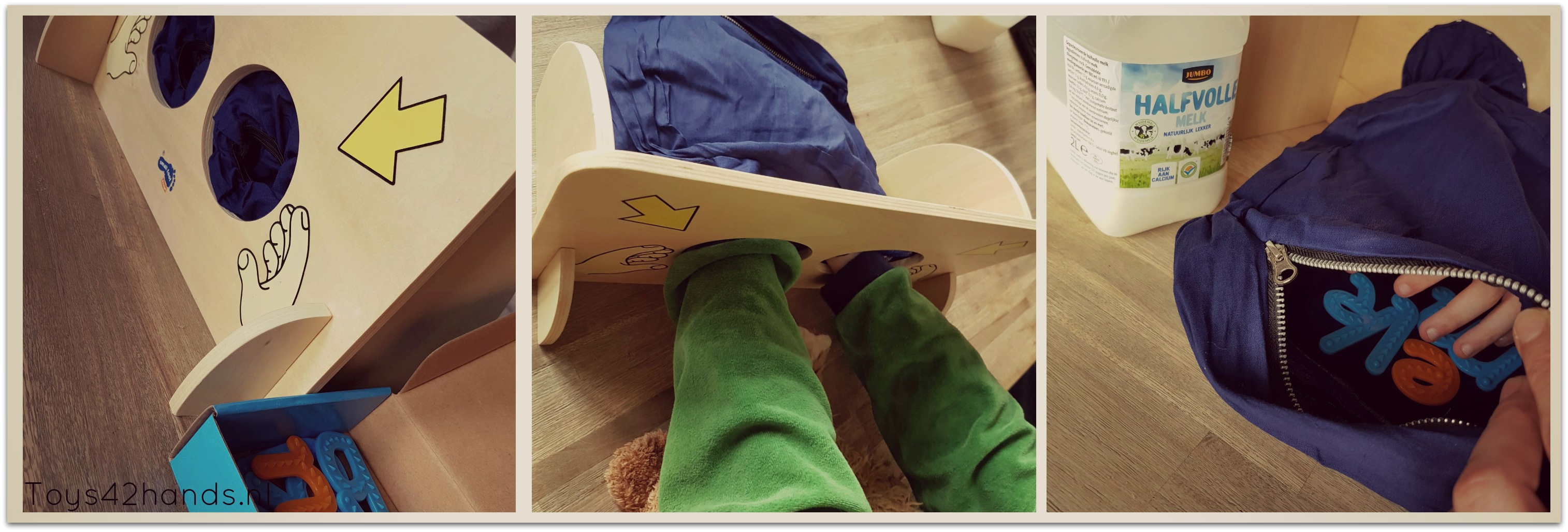
Test
I took the set of tactile letters to my nieces, aged 5, 6 and 9 respectively. First I put the letters on the floor, together with a tactile house and watched what they would do with them.
The letters were immediately placed in the tactile house and I had to sit behind it. The letters were taken one by one and it was guessed which letter it was. Well, and then it turns out that the p, d and b are very similar . After an explanation of the operation of the dots and triangles on the back, these letters soon turned out to be no problem anymore.
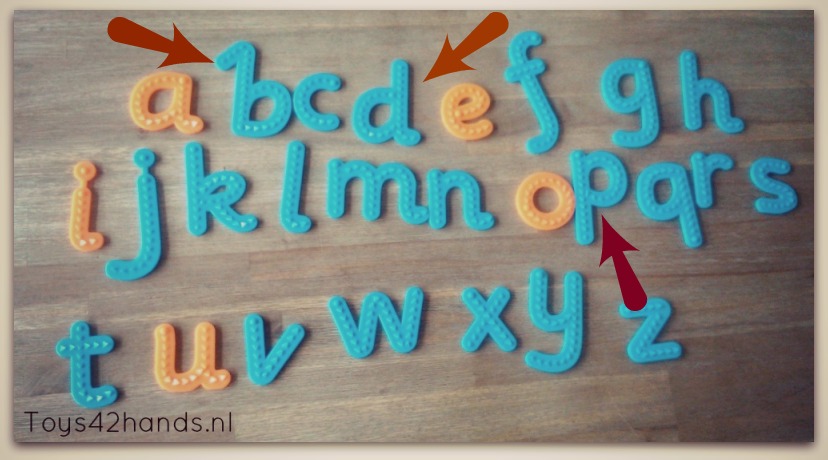
Then words…. I put words in the feel house and feel away! “Too easy words, Aunt Corina. We’ll do it ourselves!” I sat there with my mouth open watching the long words they came up with for each other. They are better at challenging each other than I am J. They played with it for a long time and had fun while they were learning.

Variation
In addition to putting letters and words in a tactile house (or in a box or under a tea towel), you can also hide letters in a container with rice, sand or shaving foam. You can give the children a word and they have to get those letters out of the container, in order or not.
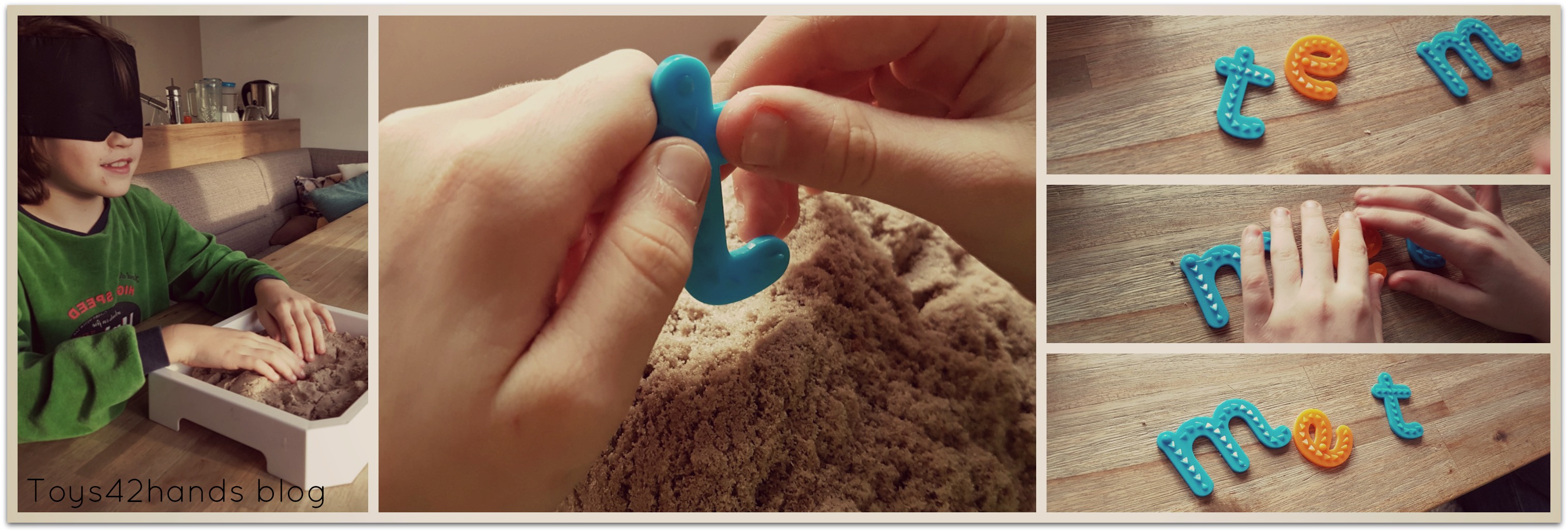
Or you blindfold the children, mix up all the letters and let them put the alphabet in order.
And what about copying the letters with clay. Make rolls of clay and have them lay them in the direction of writing.
Of course you can also just put the letters in the play corner. Look around the corner every now and then and learn new applications from the children in your group.
The sense of touch…. Switch it on!










































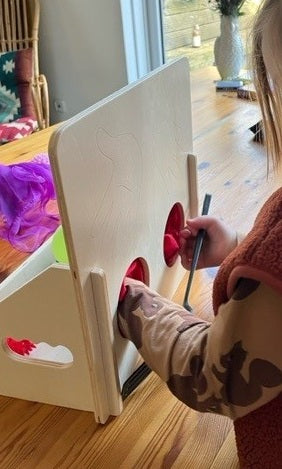
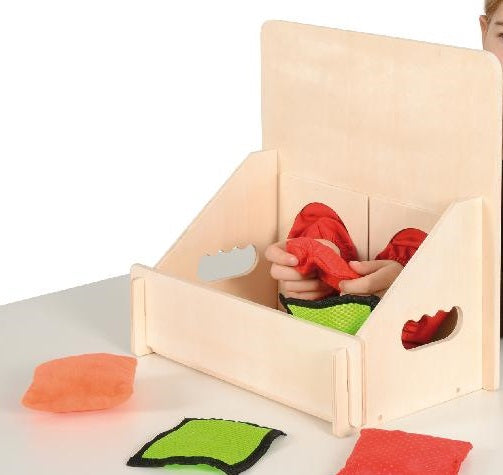




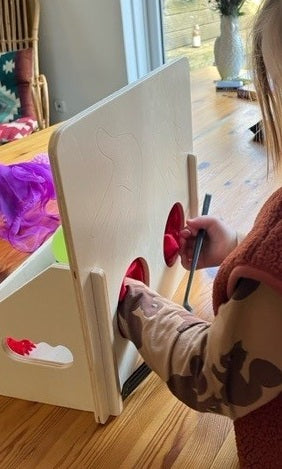
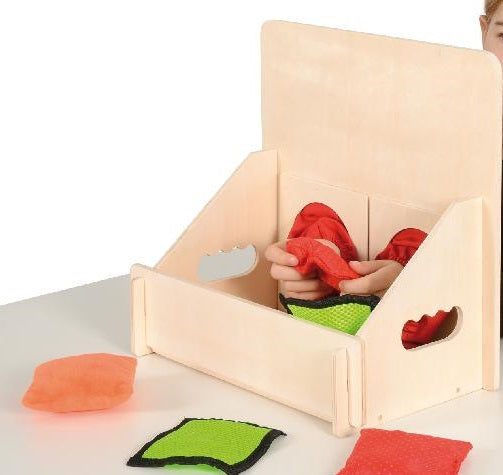
Leave a comment